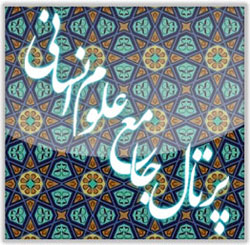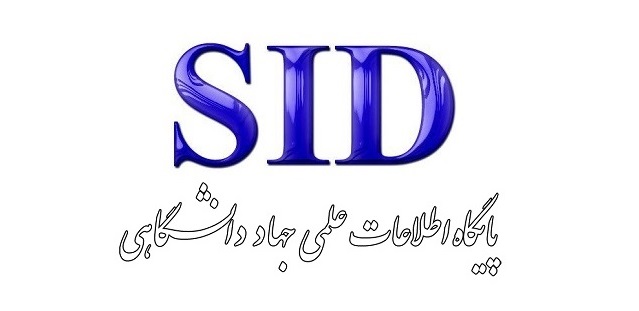Inscription Reading with the Music of Poetry
Keywords:
Inscription, Text Reading, Poetic Music, Meter, Rhyme, Interdisciplinary StudiesAbstract
The correct reading of inscriptions, especially Persian poetic inscriptions, constitutes the first essential step in epigraphic research and the study of Iranian art history. Any analysis or interpretation that is not based on the precise and accurate recording of the text is scientifically invalid and considered as “ijtihād in the face of the text” (personal reasoning against the original text). One of the main challenges in this field is the deterioration of inscriptions, the erosion of materials, and also misreadings and corruptions resulting from the passage of time. The central question of this research is whether familiarity with the music of Persian poetry—including meter, rhyme, and phonetic patterns—can serve as a tool for the recovery and correct rereading of these texts. This study, using a descriptive–analytical approach and relying on field documentation, library resources, and comparative analysis of selected poetic inscriptions in the cities of Tehran, Kashan, Shushtar, Nahavand, and Yazd, has been conducted to address this issue. The findings demonstrate that the music of poetry is not merely an aesthetic feature but also a scientific instrument for identifying and reconstructing the text. Knowledge of poetic meter plays a decisive role in reconstructing the prosodic structure of verses and in identifying missing or corrupted words. Likewise, an understanding of rhyme and phonological systems enables the researcher to determine the correct placement of hemistiches, resolve semantic and lexical ambiguities, and ultimately achieve a refined and reliable transcription. Based on the results of this research, it can be concluded that mastery of the music of poetry is not only indispensable for literary studies but also for interdisciplinary research in the fields of history, art, and architecture. In this way, literary sciences, when intertwined with historical and architectural knowledge, can contribute to the scholarly rereading of Iran’s written and inscribed heritage and open new horizons in the realm of arts associated with architecture.
Downloads
References
1. Ghuchani A. The Application of Three Ceramic Flasks Based on Their Poems. Journal of Archaeology and History. 2002;2.
2. Pour Davood H, Hossein M, Parastoo Masjedi K. The Inscriptions of Golden Glazed Tiles: A Usable Version for Correcting Literary Texts. Journal of Parseh Archaeological Studies. 2019;3(7):137-60.
3. Khezri SA, Rezazadeh Aghdam F, Adabi Firoozjani R. An Examination of the Political-Religious Backgrounds Affecting Artistic Transformations during Shahrokh Timurid's Reign. Scientific Journal of Science and Civilization in Islam. 2023;17:10-29.
4. Khanjani G. Shiite Forms and Symbols in Calligraphy, with Emphasis on the Safavid Era. Scientific Journal of Science and Civilization in Islam. 2022;13:44-62.
5. Shafi'i Kadkani MR. Adwār-e She'r-e Fārsi. Tehran: Sokhan Publications; 2001.
6. Shafi'i Kadkani MR. Mūsīqī-ye She'r. Tehran: Agah Publishing Institute; 2002.
7. Najafi A. Regarding the Classification of Persian Poetry Meters. Tehran: Niloufar Publications; 2015.
8. Najafi A. Persian Poetry Meter (Textbook). Tehran: Niloufar Publications; 2016.
9. Najafi A. Classification of Persian Poetry Meters. Tehran: Niloufar Publications; 2018.
10. Razi Sa-DMiQ. Al-Mu'jam fi Ma'āyir Ash'ār 'Ajam. Tehran: Zowar Publications; 2008.
11. Vahidian Kamyar T. Meter and Rhyme in Persian Poetry1990.
12. Shamisa S. 'Arūz va Qāfiyeh. Tehran: Payame Noor University Press; 2004.
13. Mesgernesjad J. A Brief Introduction to the Science of Prosody and Rhyme. Tehran: Allameh Tabataba'i University Press; 1991.
14. Naraghi H. Historical Works of Kashan and Natanz Cities. Tehran: Anjoman-e Āsār-e Mellī; 1969.
15. Ghuchani A. Persian Poems on the Tiles of Dr. Mohsen Moghadam's Collection. Journal of Archaeology and History. 1986;1:76-87.
16. Abū al-Faraj al-Iṣfahānī AiḤ. Al-Aghānī. 1997.
Downloads
Published
Submitted
Revised
Accepted
Issue
Section
License
Copyright (c) 2025 Dariush Zolfaghari

This work is licensed under a Creative Commons Attribution-NonCommercial 4.0 International License.









